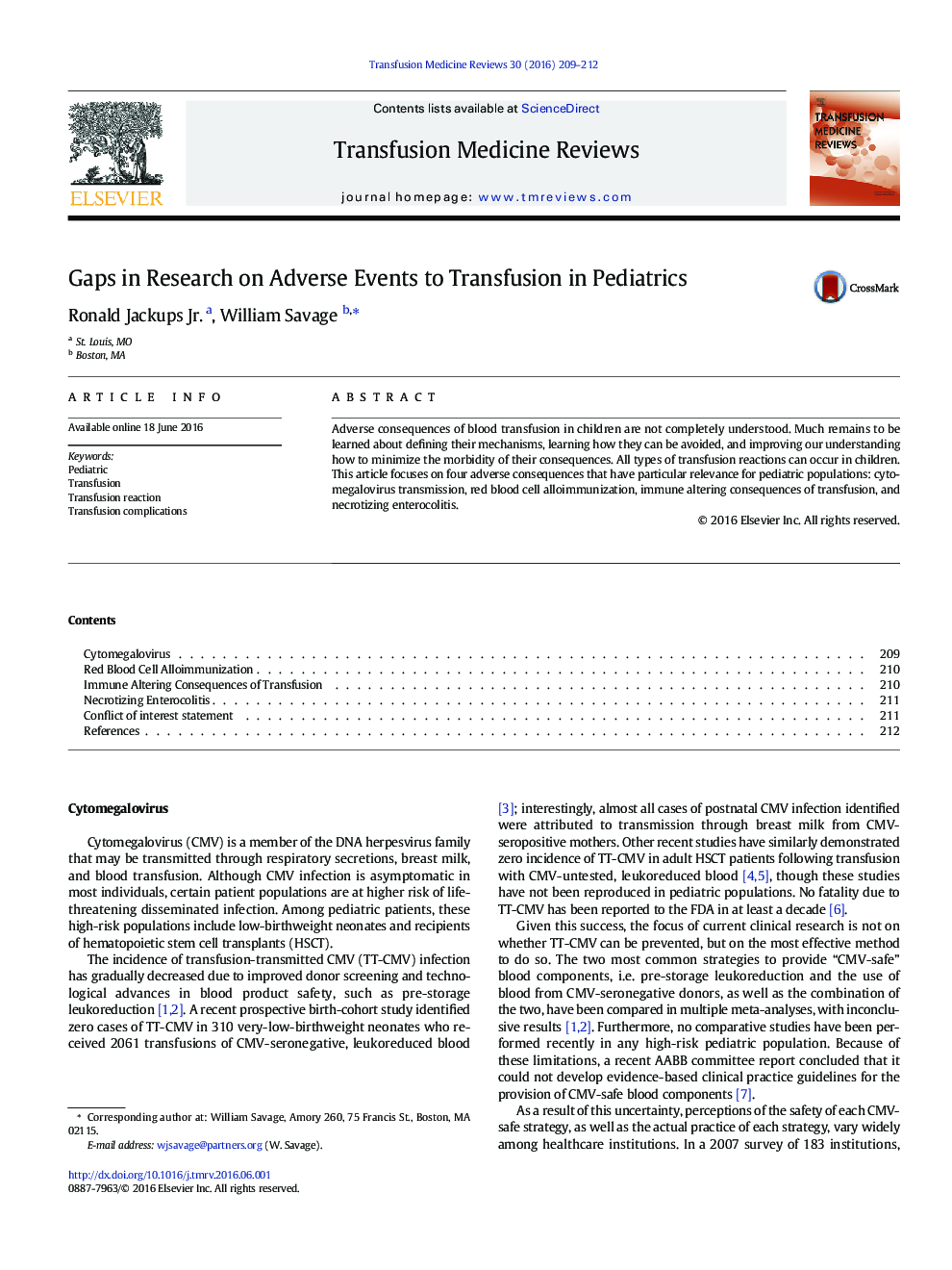| Article ID | Journal | Published Year | Pages | File Type |
|---|---|---|---|---|
| 3336445 | Transfusion Medicine Reviews | 2016 | 4 Pages |
•The most effective method to prevent CMV transmission in high-risk pediatric populations has not been established, although transmission rates are low.•An optimized, integrated strategy for blood bank prevention and management of red blood cell alloimmunization in chronically transfused children has not been established by high quality evidence.•Transfusion of cellular components has measureable immune consequences, but the clinical significance of these changes has yet to be established.•Although associations have been made among necrotizing enterocolitis, anemia, and red blood cell transfusion, the causal relationship is unclear.
Adverse consequences of blood transfusion in children are not completely understood. Much remains to be learned about defining their mechanisms, learning how they can be avoided, and improving our understanding how to minimize the morbidity of their consequences. All types of transfusion reactions can occur in children. This article focuses on four adverse consequences that have particular relevance for pediatric populations: cytomegalovirus transmission, red blood cell alloimmunization, immune altering consequences of transfusion, and necrotizing enterocolitis.
